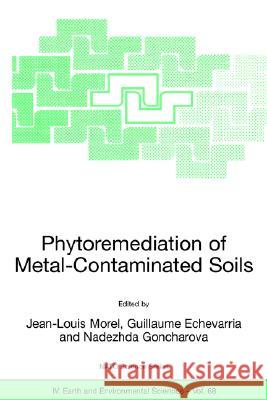Phytoremediation of Metal-Contaminated Soils » książka
Phytoremediation of Metal-Contaminated Soils
ISBN-13: 9781402046865 / Angielski / Twarda / 2006 / 346 str.
Phytoremediation of Metal-Contaminated Soils
ISBN-13: 9781402046865 / Angielski / Twarda / 2006 / 346 str.
(netto: 768,56 VAT: 5%)
Najniższa cena z 30 dni: 771,08
ok. 22 dni roboczych
Dostawa w 2026 r.
Darmowa dostawa!
Phytoremediation, the use of plants to remediate environmental media, is being pursued as a new approach for the cleanup of contaminated soils and waters, including groundwater. Plant-assisted bioremediation, sometimes referred to as a type of phytoremediation, involves the interaction of plant roots and the microorganisms associated with these root systems to re- diate soils containing elevated concentrations of organic compounds. These techniques could provide cost-effective methods of remediating soils and groundwater contaminated with metals, radionuclides, and various types of organics, with fewer secondary wastes and less environmental impact than would be generated using traditional remediation methods. All plants extract necessary nutrients, including metals, from their soil and water environments. Some plants, called hyperaccumulators, have the ability to store large amounts of metals, even some metals that do not appear to be required for plant functioning. In addition, plants can take up various organic chemicals from environmental media and degrade or otherwise process them for use in their physiological processes. Phytoremediation technologies are in the early stages of development, with laboratory research and limited field trials being conducted to determine processes and refine methods. Additional research, including genetic engineering, is being conducted to improve the natural capabilities of plants to perform remediation functions and to investigate other plants with potential phytoremediation applications. Large areas in Western and Eastern countries are polluted with heavy metals and radionuclides in natural, rural, urban or industrial areas.











